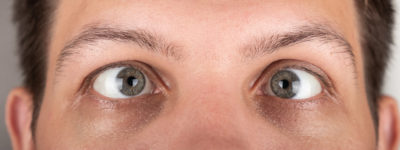Individuals who have high blood sugar levels are likely to develop an eye condition called diabetic retinopathy. In this condition, the blood vessels at the back of your eye get damaged. There might be no visible symptoms in the initial stages, but complications of diabetic retinopathy can lead to permanent blindness.
Classifying diabetic retinopathy is of two types – Proliferative diabetic retinopathy (PDR) and Nonproliferative diabetic retinopathy (NPDR). If you have type 2 diabetes, you must have heard about diabetic retinopathy ICD10. It stands for International Classification of Diseases. To facilitate accurate documentation, communication, and billing, healthcare professionals use a standardised ICD10 system to code medical conditions.
In this blog, we will look at the aspects of classifying diabetic retinopathy and diabetic retinopathy ICD10 codes associated with this sight-threatening condition.
Classifying Diabetic Retinopathy
The diabetic retinopathy eye condition is classified into the following types:
1. Proliferative Diabetic Retinopathy (PDR)
Proliferative diabetic retinopathy (PDR) is an advanced stage of diabetic retinopathy, a complication of diabetes. In this condition, prolonged high blood sugar levels damage the blood vessels in the retina. Resultantly, the retina may not receive sufficient blood supply, leading to the growth of abnormal new blood vessels on its surface.
2. Nonproliferative Diabetic Retinopathy (NPDR)
Nonproliferative diabetic retinopathy (NPDR), also known as background retinopathy, is a starting stage of diabetic retinopathy. At this stage, there may be damage to the blood vessels in the retina, but there is no growth of abnormal blood vessels yet.
What is Diabetic Retinopathy ICD10 Code?
ICD10 is a standardised coding system maintained by the World Health Organization (WHO). It is widely used by healthcare providers, insurance companies, researchers, and policymakers to classify and record medical conditions. The system uses alphanumeric codes to represent different diseases, disorders, and health conditions.
Decoding Diabetic Retinopathy ICD10 Codes
While classifying diabetic retinopathy eye condition, healthcare professionals use specific codes. Like, in the case of type 1 diabetes, the codes start with E10, while the codes for type 2 diabetes start with E11. Here are some diabetic retinopathy ICD10 codes:
1. E10.311 – Type 1 diabetes mellitus with unspecified diabetic retinopathy with macular edema
This diabetic retinopathy ICD10 code is used when a patient with type 1 diabetes has diabetic retinopathy, but the level of severity is unspecified. Healthcare professionals need to document the type of diabetes and any related complications accurately.
2. E10.319 – Type 1 diabetes mellitus with unspecified proliferative diabetic retinopathy (without macular edema)
When diabetic retinopathy progresses to a more severe stage with the development of abnormal blood vessels in the retina, it is classified as proliferative diabetic retinopathy. This code is specifically for patients with type 1 diabetes.
3. E11.311 – Type 2 diabetes mellitus with unspecified diabetic retinopathy (with macular edema)
Like E10.311, this diabetic retinopathy IC10 code is used for patients with type 2 diabetes who have diabetic retinopathy, but the severity level is unspecified.
4. E11.319 – Type 2 diabetes mellitus with unspecified proliferative diabetic retinopathy (without macular edema)
For patients with type 2 diabetes who have advanced proliferative diabetic retinopathy, this code records the condition in medical records and billing systems.
5. E11.331 – Type 2 diabetes mellitus with mild nonproliferative diabetic retinopathy (with macular edema)
In the initial stages of diabetic retinopathy eye condition, tiny blood vessels in the retina may leak, leading to mild nonproliferative diabetic retinopathy. This code indicates this stage in patients with type 2 diabetes.
6. E11.339 – Type 2 diabetes mellitus with moderate nonproliferative diabetic retinopathy (without macular edema)
As diabetic retinopathy progresses, the condition may reach the moderate nonproliferative stage. This code is assigned to patients with type 2 diabetes who exhibit this level of severity.
7. E11.351 – Type 2 diabetes mellitus with proliferative diabetic retinopathy (with macular edema)
The patient’s vision is significantly impacted at the proliferative stage, requiring careful monitoring and management. This code is used for patients with type 2 diabetes.
8. E11.359 – Type 2 diabetes mellitus with proliferative diabetic retinopathy (without macular edema)
When proliferative diabetic retinopathy is present, the medical professionals use this code to specify its category as type 2 diabetes.
9. E11.36 – Type 2 diabetes mellitus with diabetic cataract
A diabetic cataract is a common diabetic complication where the eye’s natural lens clouding occurs. This diabetic retinopathy IC10 code is used when a diabetic cataract is present in a patient with type 2 diabetes.
10. E11.39 – Type 2 diabetes mellitus with other diabetic ophthalmic complication
For any other diabetic retinopathy eye complications not covered by the specific codes mentioned earlier, healthcare professionals may use this code to describe the condition further.
Diabetic retinopathy is a serious condition among individuals with diabetes that can result in blindness if left untreated. The International Classification of Diseases, 10th Revision (ICD-10), provides a standardised system for coding and documenting diabetic retinopathy cases accurately. By understanding the diabetic retinopathy ICD10 codes associated with diabetic retinopathy, healthcare professionals can contribute to better management and prevention strategies. This improves the quality of life of diabetic patients.
Whether it is type 1 or type 2 diabetes, consult our ophthalmologists to mitigate your vision difficulties. We at Dr Agarwals Eye Hospital stand out with our veteran team of highly skilled professionals in treating your eye problems with advanced care.
For exceptional eye care facilities, visit Dr Agarwals Eye Hospital today!









